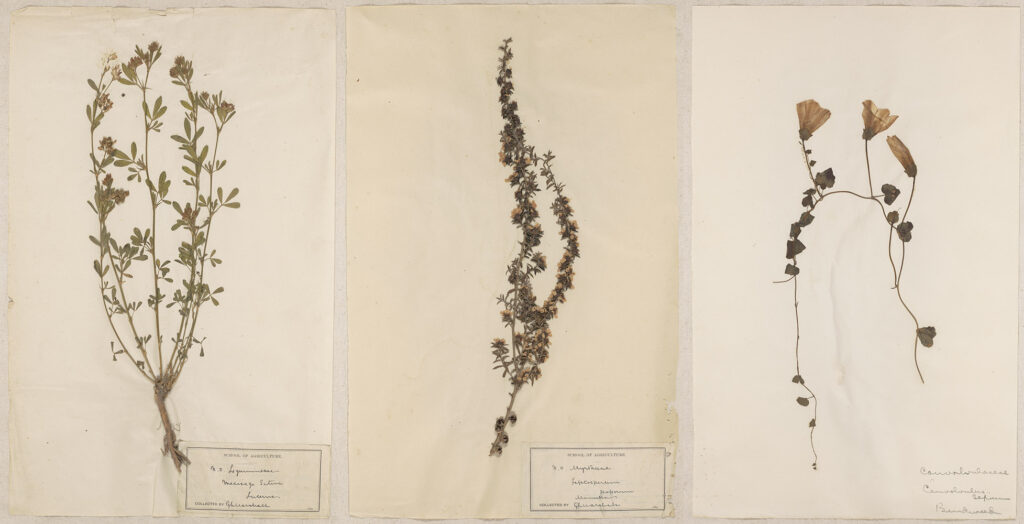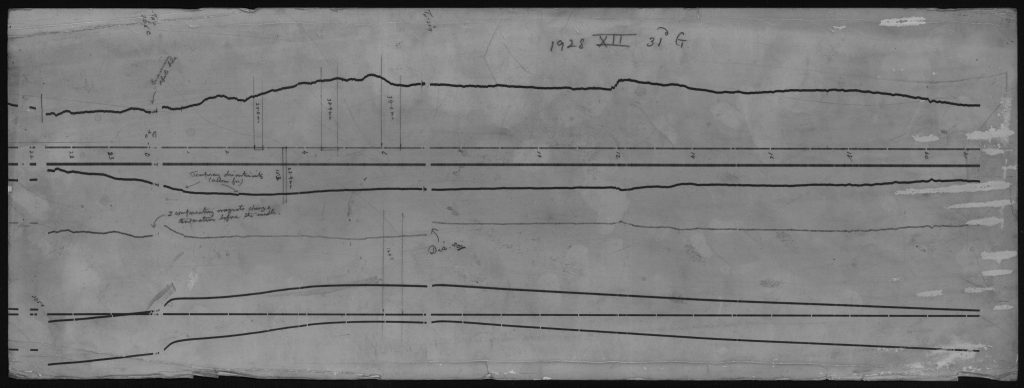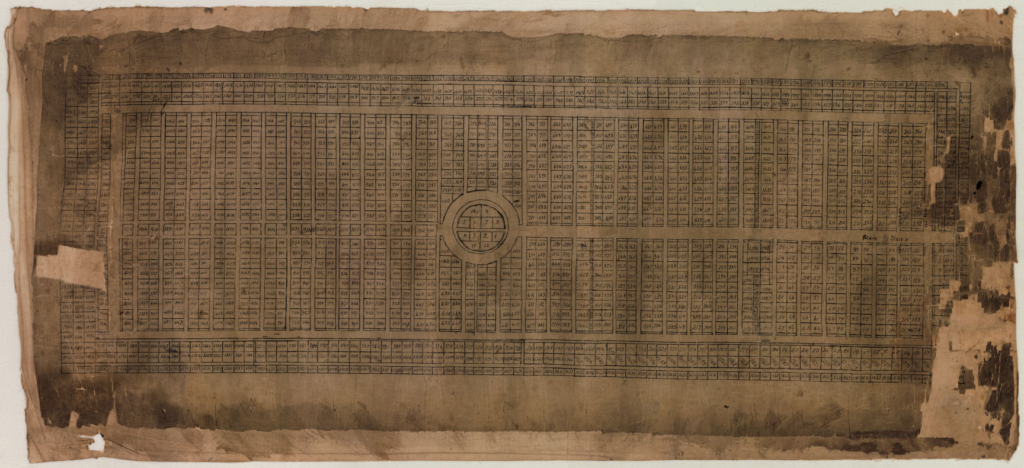The digital world is becoming increasingly ingrained in our daily lives, transforming how we communicate, learn, and think. The need for online access to collections is growing, especially within the cultural heritage sector, and more recently within local government and private companies. Through digitisation, researchers and historians are discovering new and innovative ways to share collections with a wider, often global audience.
Digitisation should not be a venture exclusive to cultural heritage institutions. It can be valuable for almost any company or organisation holding archives or collections — it increases workplace efficiency and supports teams by providing access and enabling collaboration. There are many reasons to digitise collections or archives: to aid preservation, reproduction, engagement, accessibility, or even administrative tasks.
Digitising collections or archives can breathe new life into an organisation’s history and uncover significant information that otherwise might have been lost. The following resource overviews why an organisation, institution, or business might digitise their collections or archives.
Limitless Access
Digitisation provides extraordinary access to information: not only does it make the remote more accessible, but it can also reveal the indistinct.
Research materials from anywhere in the world can be brought together online, enabling viewers to build new connections between collections and compare items that otherwise would have remained entirely separate. Online access not only removes geographical limitations, but it also has the potential to reach audiences across social and economic boundaries. Researchers can find the information they need quickly with access to digitised collections and archives — allowing new discoveries and ideas to gain better momentum.
Items or documents that are hard to examine because of their quantity, physical condition, format, or size are more accessible once digitised. These items include large historic maps, incunabula books, slide film, glass plates, or photographic negatives. The abundance of analogue formats in audiovisual and photograph collections makes using or viewing these items challenging — and in some cases it can be impossible. Items like glass plates or film negatives can usually only be viewed through digitisation that converts them into a readable or viewable format. Additionally, digitised photographs or documents that are low contrast or blurry can be digitally enhanced to reveal details ordinarily invisible to the eye.
The age and fragility of historical items often mean that handling them is restricted, making them a prime candidate for digitisation. For example, the United States Library of Congress no longer allows researchers to examine Pierre-Charles L’Enfant’s original 1791 plan for the city of Washington because it is so brittle and deteriorated — however, now that it has been digitised, anyone with an interest can view the reproduction on the library’s website.
Digitised collections and archives can also serve as powerful teaching materials for students who would otherwise not have had the opportunity to access the original items. Teachers can expose their students to the primary sources of the subject they are teaching. Students are largely unable to handle primary source material stored within their institution’s faculty archives because of the risks involved — including limited knowledge of handling practises and the danger of irreversibly damaging rare items. Digitisation of primary sources is not only beneficial for cultural heritage-based subjects; it can be useful for the sciences as well. For example, Lincoln University recently digitised a collection of historical herbarium samples (c.1890) from the School of Agriculture which have been uploaded to their Recollect site, Living Heritage. The high-resolution images can be used to compare directly to their contemporary examples, providing a chance to study the minute details of the plants and their possible adaptation to environmental changes over decades.

Increased Searchability
Digitisation also increases the searchability of collections and archives: relevant content can be easier to find, and research can be carried out efficiently when items are coupled with clear metadata. Digital search processes allow for near-instant access to information relating to digitised collections by providing a way of quickly retrieving more detailed data (such as using OCR) than through analogue means.
Optical Character Recognition (OCR) can be an incredibly useful tool alongside the digitisation of cultural heritage items — especially for newspapers, microfilm, paper-based records, and books. It involves digitally converting printed or handwritten text into a form that can be recognised by a computer. OCR can act as a form of metadata creation for text-based documents and can enrich the use of files through tools like keyword searches.
Digitisation can change how research is undertaken, not only by increasing the speed at which information can be found but also by allowing for interlinking search functions that can be used to drill down into specific records.
Digitisation enables quick and easy browsing of large volumes of material, for example, the 22,000 historical magnetograms NZMS Wellington digitised for GNS Science. Historic magnetograms, which look vastly different to contemporary examples, are recorded on photographic paper and reveal the variations in the strength and direction of the Earth’s magnetic field. By having their historical magnetograms digitised, GNS can extend its digital dataset and enable a University of Otago research group to perform a comprehensive statistical analysis. This research will determine the likelihood (and consequences) of future extreme geomagnetic storms and their potential impact on New Zealand.

Digital Preservation
Digitisation to aid preservation is gaining recognition, especially for historical items that are expected to degrade over time despite being kept in recommended storage and display conditions. Historical audiovisual and photographic items are frequently found to have been recorded using fragile and unstable material: glass plates, nitrate or acetate-based film negatives, and magnetic audiovisual tapes. These items can provide a rich source of historical evidence but the information they hold cannot be recovered once they have begun to degrade. Items prone to degradation might damage other materials if kept in close proximity and can even pose serious health/environmental risks as often witnessed with volatile nitrate negatives.
After being digitised, the original items will not need to be accessed, which means the potential for damaging them is greatly reduced. It is important to produce a high-quality digitised image because the digital copy will serve as the only record of an item once it has begun to deteriorate or is destroyed. In her article The Digital Phenomenon for the Digitising & Imaging Review journal, Jill Koelling, makes the concise statement that “the point of digital preservation projects is to capture the information held by the original before time turns that information to dust.”
Growing Engagement
Digitisation can increase engagement with collections by making sure that previously inaccessible materials are easily discoverable online. Younger generations of students and researchers usually consult libraries or archives as a last resort, opting to instead search online for the information they need. These institutions need to evolve to offer more online access if they want to continue acting as primary providers of information — and digitisation is the solution.
Digitised collections are versatile and can be used across a range of online channels. They are a particularly strong resource for social media: significant collections or items can be promoted, and a dialogue can be started to engage a wider audience. Uploading digitised collections online can also be used to encourage collaborative activities, like crowdsourcing the creation of a collection’s metadata, or the transcription of handwritten text.
Since COVID-19, digitisation has become a crucial task across almost all sectors — largely because it provides greater flexibility in staffing and can allow work to continue, even during nationwide lockdowns. Staff can work remotely if the collections or records that they need to access are digitised. An organisation might also benefit from an increase in staff retention when people can enjoy the flexibility of being able to work from home.
Integration Across Systems
Organisations and institutions can find both internal and external benefits from digitising their collections or archives: digital copies allow for the implementation of automated processes, including those that enable better record management, research, and access. Administrators will have the opportunity to utilise a larger proportion of their collections or archives, because items will be easier to locate digitally, and records can be cross-referenced against others for improved accuracy.
Organisations or companies that rely solely on paper records can waste many hours maintaining, locating, or updating their collections or archives. Converting records into a digital format will speed up internal processes by enabling digital searching rather than requiring employees to manually sort through large quantities of irrelevant material in hopes of finding the information they need. Digitisation boosts efficiency, particularly for workplaces such as local councils, because it speeds up the turnaround on document requests for property files, land boundary information, etc. Manually storing, filing, and handling large numbers of documents can be daunting, and digitisation means that items can be found at a faster rate.
NZMS digitised a collection of historical cemetery plans for the Christchurch City Libraries which has proved to be a valuable endeavour. Digitisation of these kinds of records can help people access the information they need without stretching council resources. For example, the Addington Cemetery Plan features comprehensive information about burial plots and their location. However, at approximately A0 (110 x 49cm) in size it is unwieldy to handle and view, as well as being very fragile due to its age. This meant it was not only difficult to consult, but it was time-consuming to retrieve from storage. Now that a high-resolution digital copy is available, people contacting the council with enquiries related to the Addington Cemetery can simply view it online through Christchurch City Libraries’ digital heritage repository, Canterbury Stories.

Meeting Compliance
Most companies and institutions have to contend with numerous compliance requirements imposed by local councils, the government, or regulatory organisations. Digitisation can make it easier to continue to meet compliance, for example, it can ensure adherence to New Zealand’s Public Records Act.
The Public Records Act (2005) states that organisations must:
- Enhance the accessibility of records that are relevant to the historical and cultural heritage of New Zealand and to New Zealanders’ sense of their national identity.
- Provide for the preservation of, and public access to, records of long-term value.
This means that organisations that lose original paper documents and do not have electronic backups may face serious consequences for non-compliance. Digitising archives increases operational efficiency, improves workflow, and guarantees compliance. Most importantly, digitisation makes sure that collections remain accessible, even if the original is lost or damaged.
Former UNESCO Director-General, Jaime Torres-Bodet, eloquently explains the overarching value of digitisation: “rather than vast cemeteries, archives are places full of the experiences, adventures, risks, and dramas of society. They are crucial to the continuity of human conscience, and to the possibility of good government; they contain the instructive traces of life.”
Read our next resource relating to this topic Developing a Digitisation Strategy or contact us for digitisation assistance and further recommendations.
References and Resources
- Cohen, D., & Rosenzweig, R. (n.d.). Becoming Digital. Digital History. https://chnm.gmu.edu/digitalhistory/digitizing/1.php
- Desktop Imaging. (2021, February 10). The Digital Sphere & Timaru District Council. https://www.desktopimaging.co.nz/our-work/the-digital-sphere-timaru-district-council
- Digital NZ. (2009). A Framework for Good Digitisation in New Zealand (Version 2.0). https://bit.ly/3fS55rj
- Horan, G. (2013). Digital Heritage: Digitization of Museum and Archival Collections. Research Papers, Paper 374. http://opensiuc.lib.siu.edu/gs_rp/37
- Krach, K. (2018, April 25). 7 Surprising Reasons You Should Digitize Your Company. Medium. https://bit.ly/3urBbiJ
- Kubelka, M. (2017, November 1). Why Digitizing Primary Sources Is Critical to Research. Wiley. https://www.wiley.com/network/librarians/digitizing-archive-collections/why-digitizing-primary-sources-is-critical-to-research
- Matusiak, K., & Johnston, T. (n.d.). Digitization as a Preservation Strategy. UNESCO. http://www.unesco.org/new/fileadmin/MULTIMEDIA/HQ/CI/CI/pdf/mow/VC_Matusiak_Johnston_28_B_1400.pdf
- McKay, S. (2003). Digitization in an Archival Environment. Electronic Journal of Academic and Special Librarianship, 4(1). https://southernlibrarianship.icaap.org/content/v04n01/Mckay_s01.htm
- National Library of Australia. (n.d.). Collection digitisation policy. https://www.nla.gov.au/policy-and-planning/collection-digitisation-policy
- National Library of New Zealand. (n.d.). Digitisation of heritage audio collections. https://natlib.govt.nz/collections/caring-for-your-collections/heritage-audio-digitisation
- Smith, A. (1999, February). Why Digitize? Council on Library and Information Resources. https://www.clir.org/pubs/reports/pub80-smith/pub80-2/
- UNESCO. (n.d.). About the project. UNESCO Archives. https://digital.archives.unesco.org/en/about-the-project
- Xie, I., & Matusiak, K. K. (2016). Digitization of text and still images. Discover Digital Libraries, 59–93. https://doi.org/10.1016/b978-0-12-417112-1.00003-x
